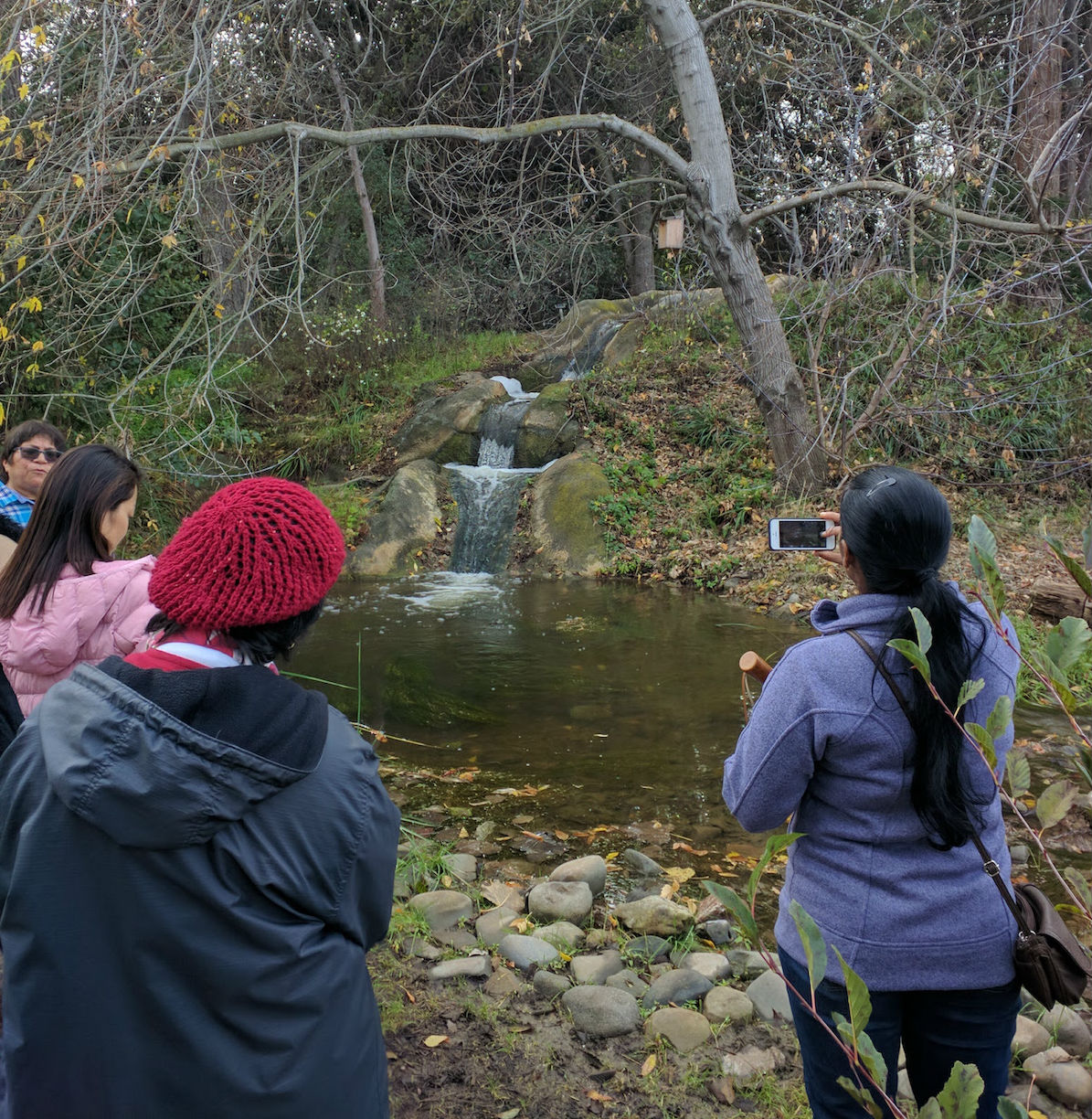About the ESA
The Cheeseman Environmental Study Area is located next to the Kirsch Center for Environmental Studies on the southeast corner of campus. It's a lush natural garden and a living classroom, containing some 400 species of plants representing 12 California natural communities. In addition to the native plant communities, there is a xeric native plant display at the entrance.
Video Tour: Cheeseman ESA
See more of our campus video tour on the Video Tour webpage.
California's Biological Richness
California is a naturalist's paradise. Our state has hundreds of habitat types and plant communities, with more than 5,000 species of native plants. You can experience many of these special wonders with a walk through our 1.5 acre garden.
At least a third of California's native species are found naturally nowhere else on Earth. California's plants support nearly 1,000 vertebrate animals-fish, amphibians, reptiles, birds and mammals. Among animals as a whole, including insects and other invertebrates, at least 50 percent of the species and subspecies are found only within our state. In short, we are very fortunate to live in such a biologically vibrant place!
Cheeseman ESA Facts
- 1.5 acres
- Over 400 species of native plants
- Visited by several thousand students and community members per year
- Free tours for school and community groups led by our skilled docents
- Xeric plant display
12 Native Plant Communities
- Freshwater marsh and pond
- Coastal sand dunes
- Coastal redwoods
- Foothill woodland
- Grassland
- Conifers
- Channel Islands
- California desert
- Coastal sage scrub
- Chaparral
- Riparian
- Xeric display
Experience the ESA!
- NEW: ESA Pictorial Story Map
- Visit our ESA photo gallery to see what lives in these California plant communities
- Request a tour for your community or school group
- Read the story of the ESA.


